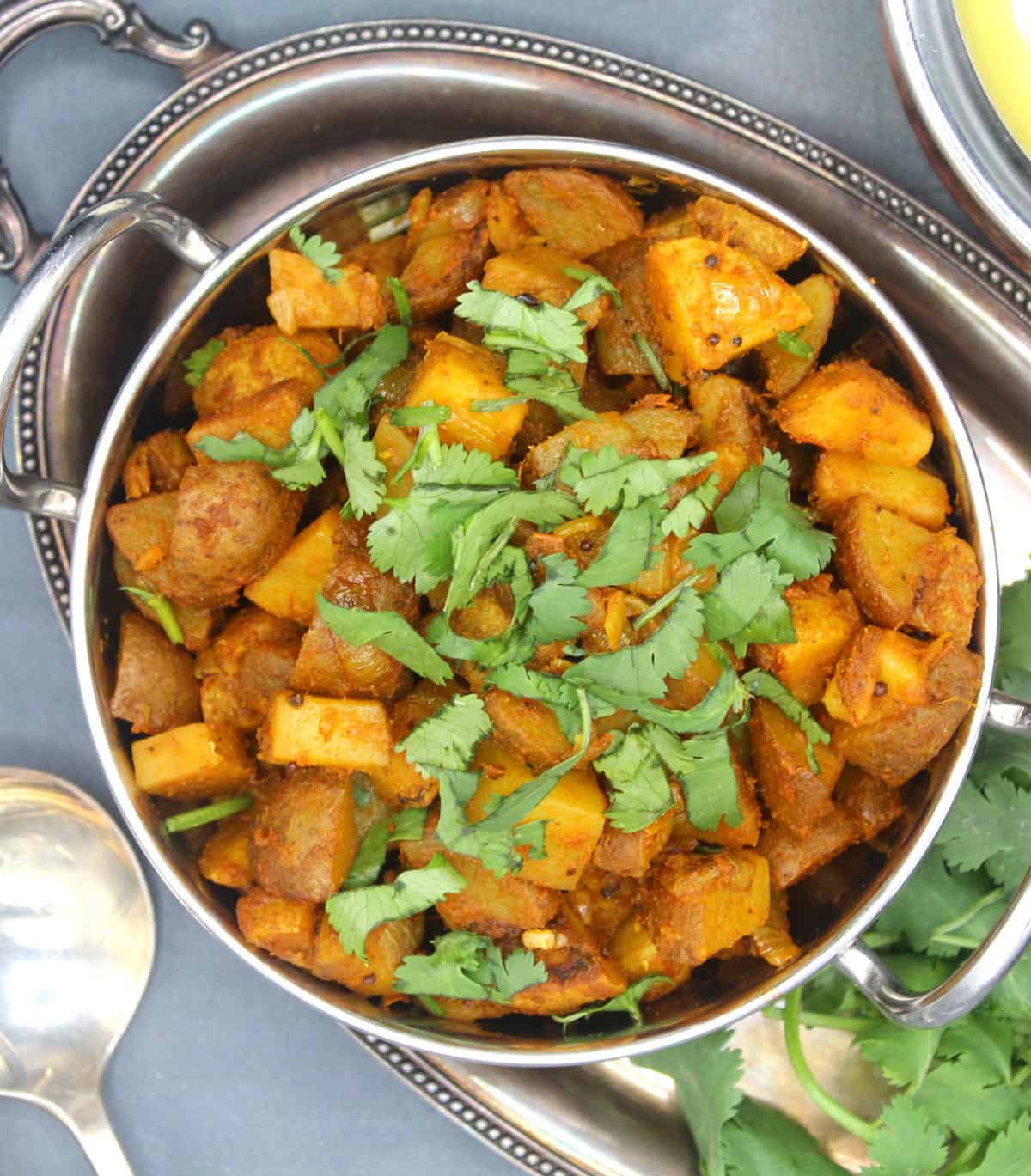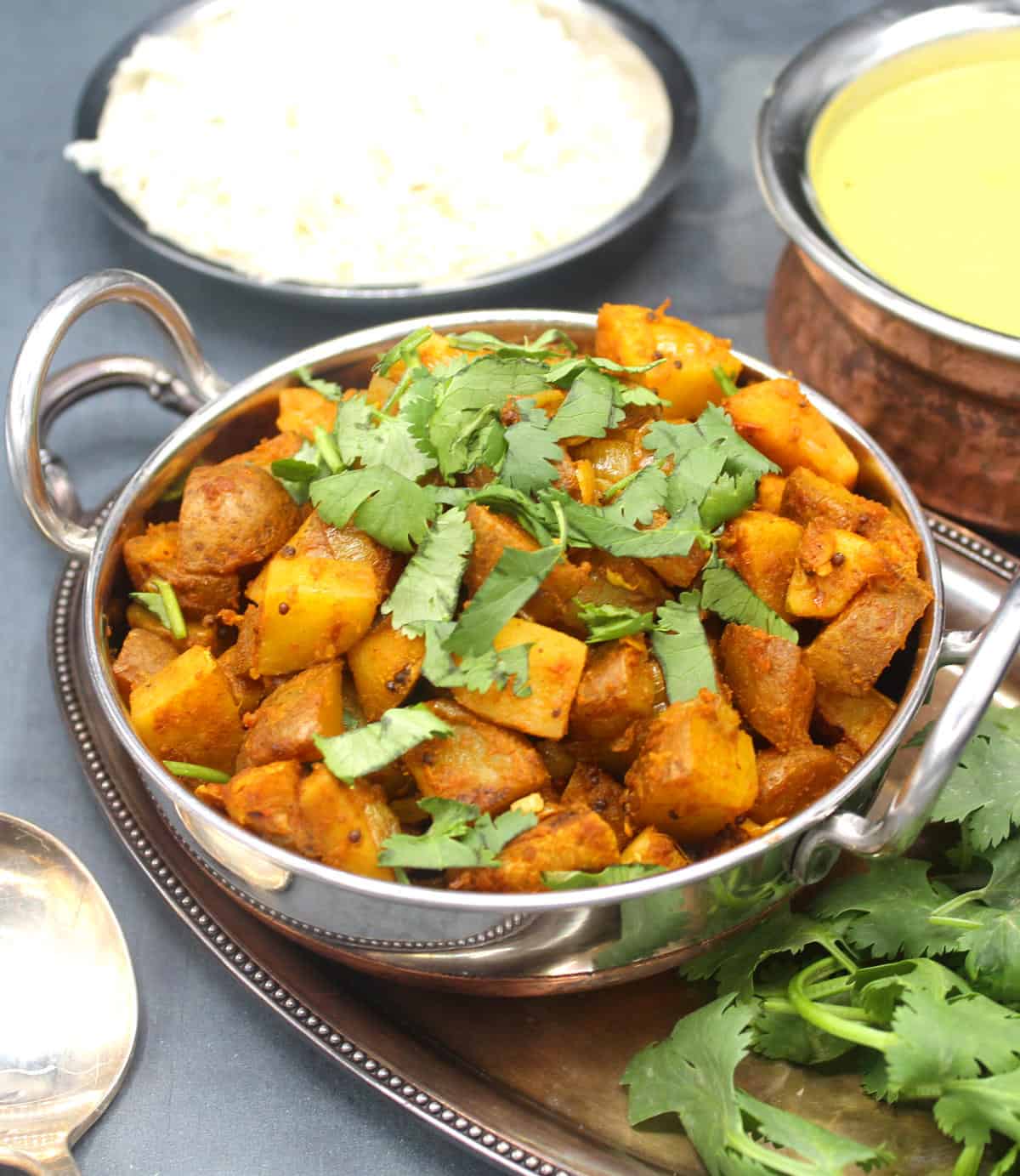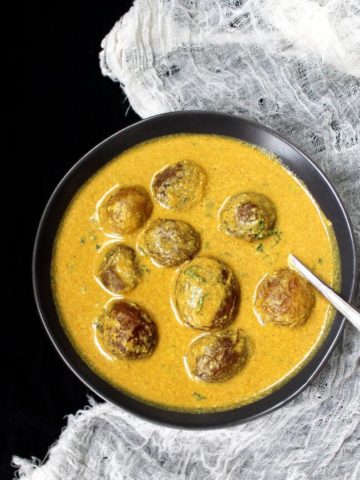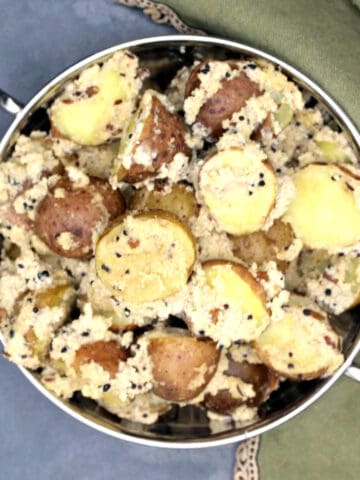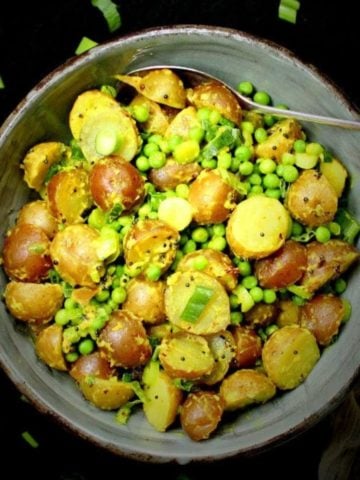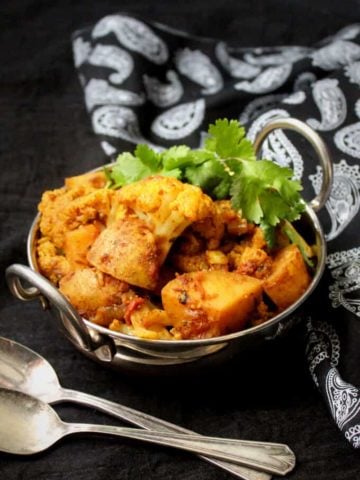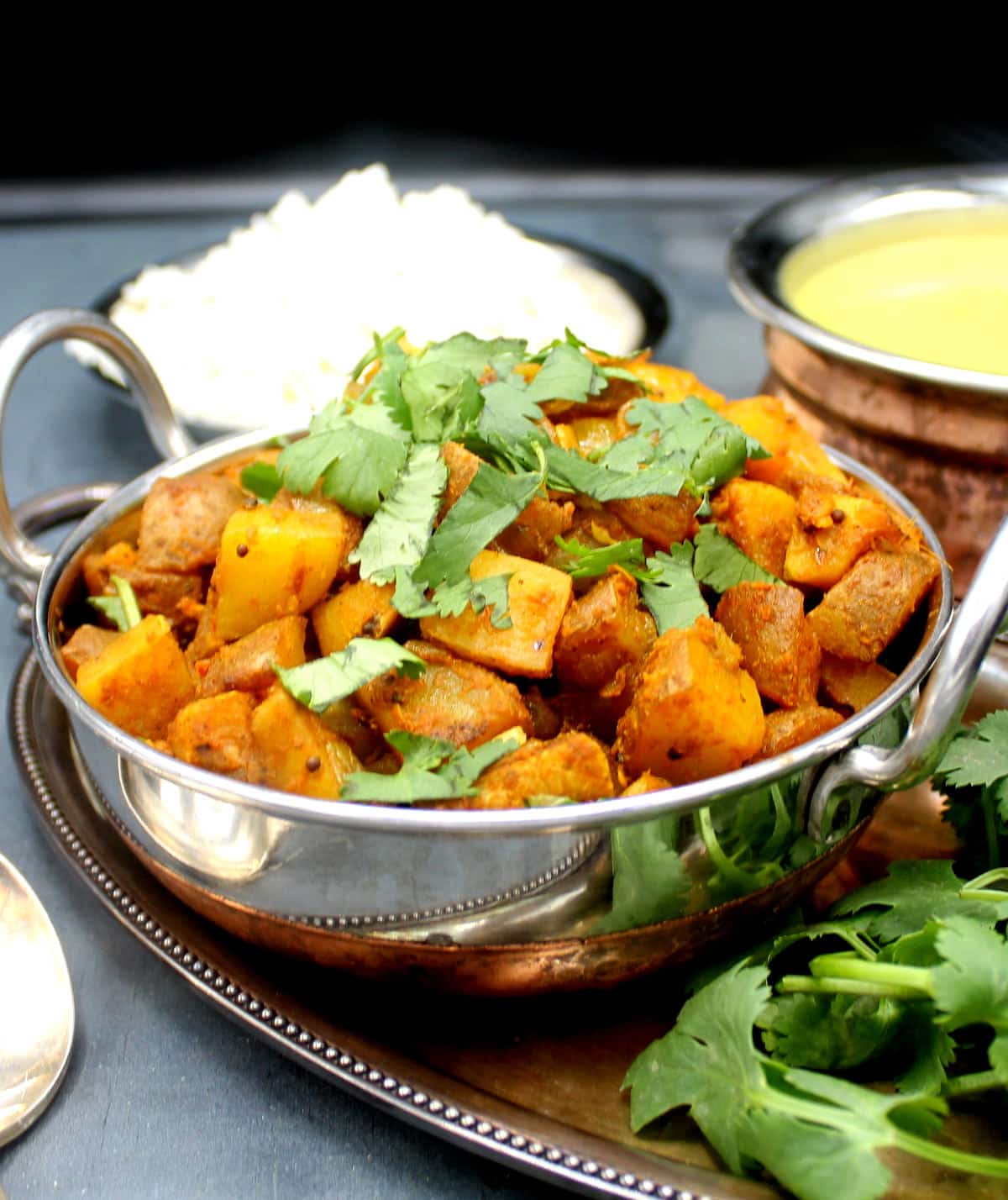You might also like these recipes for masala potatoes and potato curry. I was born and lived in Bombay into my 20s, but in all those years I never once encountered a dish named “Bombay Potatoes.” So when I started to see recipes for Bombay Potatoes begin to pop up across the internet with no clear explanation of their origin but with quintessentially Indian ingredients, I was tickled curious. Sure, we ate potatoes in Bombay–a lot. Bombay is a microcosm of India and you could find all kinds of potato dishes belonging to the many regional cuisines here. There was aloo masala or batatyachi bhaji, a turmeric-stained, mustard-seed-studded side to scoop up with pooris, especially on picnics and outings. Jeera Aloo, a north Indian dish with cumin seeds as their main flavoring, and aloo gobi. There were the typical restaurant offerings like aloo matar and aloo saag….but never Bombay potatoes. Since I can’t leave things well alone when they pique my interest, I kept digging into this until I could begin to make some sense. What seems very likely, although I didn’t find a single source confirming this, is that Bombay potatoes – or at least the name – are British rather than Indian in origin. It makes sense. The British introduced potatoes to India during colonial times, were rather chuffed about it because they were on a mission to introduce the rest of us to what they deemed “superior” vegetables, and then they took our chefs back home with them to spice up their own cuisine. These cooks went on to create a whole slew of dishes that have roots in India but were created in Britain, like balti, tikka masala sauce, kedgeree, curry powder…and Bombay potatoes? For my Bombay Potatoes, I simmered the potatoes with tomatoes because these two veggies are an incredible combination, especially when you let the tomatoes cook long enough to crust the potatoes. And then I used curry powder because its flavor is perfect here and because it, too, is so confoundingly British.
Why you’ll love this recipe
Easy. There’s almost no skill or expertise required to make these Bombay potatoes. Delicious. Potatoes and spices. Need I say more? Healthy. Potatoes can be incredibly waist-friendly, if they are not smothered in oil or butter. In this recipe the natural healthfulness of potatoes gets an additional boost from the flavorful spices. Kid-friendly. Kids and potatoes. It’s like peas and carrots, except in this case one eats the other. Needs just nine easy ingredients. And most of these you likely already have in your pantry. One-pot. Easy cleanup. What more can you ask for?
How to make Bombay Potatoes
Most Bombay Potato recipes ask you to start out by parboiling or boiling the potatoes first. I prefer not to do that for this recipe where we want the potatoes to cook with the tomatoes and develop that nice crust. Parboiling the potatoes will just make them soft and mushy and while that can be nice in a jeera aloo or batatyachi bhaji, it won’t work here. The happy effect of this is it makes this recipe one-pot as well. Start out your recipe by sputtering mustard seeds in coconut oil in a wok or large skillet, and then sauteing shallots in that mustard-flavored oil until they are just slightly soft. You can use red onions but I like using shallots which more closely resemble local Indian onions, with a bolder flavor. There are so few ingredients in this recipe, you want to extract all the flavor from each element that goes into your pot. Don’t cook the shallots too long by themselves. The reason for this is that they will continue to cook with the potatoes, and if you brown them too much at this stage they will overcook and probably burn. Add turmeric and grated ginger to the pot and saute quickly for a few seconds. Add the potatoes, cut in a small dice, to the skillet along with salt and saute. You want the potatoes to be small because we are adding them raw and they are going to cook entirely in the skillet. Put a lid on the skillet or wok and let the potatoes cook, over medium to low heat, until they are about halfway done. Stir the potatoes frequently to make sure they are not sticking to the bottom. A nonstick wok or skillet makes this much easier. Add the tomato puree to the pot along with the cayenne and curry powder. Mix well, maintain heat at medium to low, and cover. Check frequently and stir. Some potatoes might stick a bit to the bottom, which is fine, because that will help them become crusty. Don’t let them burn, though. Once the potatoes are tender, take the lid off and let the potatoes continue cooking for another two minutes. Stir frequently so nothing stays at the bottom of the pot for too long. Check salt and turn off heat. Garnish with cilantro and serve hot.
Serving suggestions
Dal and rice are the perfect accompaniment for these Bombay Potatoes. Serve with Indian pickles or poppadum on the side. You can also just serve these potatoes as a side with any western-style dish. It’d be great, for instance, with these Sprouted Mung Bean Burgers.
More Indian potato recipes
Recipe card
Check to get new recipe updates by email.
